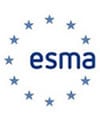The derivatives market has taken its chance to challenge European regulation on central clearing of credit default swaps (CDS), highlighting once again the inconsistency between Brussels proposals and US rules.
The European Securities and Markets Association (ESMA) requested feedback from the industry on its CDS clearing rules, and subsequently attracted feedback from trade associations, exchanges, asset managers, banks and clearing houses alike.
As with almost every element of European regulation, one of the most scrutinised aspects of the draft was the differences in instruments earmarked for central clearing.
ESMA’s standards propose that liquid untranched European index CDSs referencing iTraxx Europe Main or iTraxx Europe Crossover indices, be covered by clearing obligations that would require the trades to go through a CCP.
This does not include single name CDS, CDX indices and CDSs based on the iTraxx Europe High Volatility index, with the latter two deemed fit for clearing by the Commodity Futures Trading Commission (CFTC) across the Atlantic.
“We agree with the determination of the CFTC that despite such lower volumes, the iTraxx Europe High Volatility index meets the requisite criteria for inclusion in the clearing obligation,” said the Federation of European Securities Exchanges (FESE).
‘The inclusion of this product by ESMA in the scope of the clearing obligation in Europe would avoid international divergence.”
FESE added the absence of CDX indices represented yet another marked difference in the scope of the clearing obligation between EU and the US.
The European Association of Clearing Houses echoed FESE’s voice on the CDX indices series along with the iTraxx Europe High Volatility index.
CME Group supported ESMA’s decision though, insisting the High Volatility series was not liquid enough for clearing.
The Alternative Investment Management Association also urged ESMA to ‘coordinate as closely as possibly with the CFTC on any future mandatory clearing designations for untranched indices’ but did state it agreed with the classes which are being subjected to clearing.
LCH. Clearnet SA and ICE Clear Europe are the only two CCPs which are currently capable of clearing the CDS products, and one of the major issues highlighted by the two leading trade associations was the fact that ICE has not been authorised by ESMA at the present time.
Who will clear?
CCP recognitions under the new rules have been coming thick and fast in recent months with some of Europe’s largest clearing houses – including Eurex Clearing, CME Clearing Europe and Nasdaq OMX Clearing – all granted approval.
The Futures Industry Association and the International Swaps and Derivatives Association (ISDA) chose to focus on this issue in their response to ESMA’s consultation.
“The vast majority of cleared iTraxx index CDS is currently cleared at ICE Clear Europe. ICE Clear Europe is the only EU CCP which currently supports active client clearing of this type of CDS,” the associations wrote in a joint letter.
They added that if ICE is not authorised before the technical standards come into force then “this would cause market disruption as firms which are not already clearing members of LCH.Clearnet SA would need to establish links with it or to establish clearing arrangements with clearing members of LCH.Clearnet SA.
“In addition, unless off-setting trades are exempt from the clearing obligation, it may be impossible to migrate the risk to the authorised CCP,” the letter continued.
The trade bodies added that while they recognised the scope of the clearing obligation is narrower than the determinations made by the CFTC, they agreed with ESMA’s exclusion of the iTraxx Europe High Volatility 5 year and iTraxx Europe Main 10 year contracts from the clearing obligation, given the associated liquidity characteristics of the contracts.
With market participants sitting on different sides of the fence on which CDS instruments should be cleared, ESMA now has until 22 November to contemplate the feedback before finalising and proposing its standards to the European Commission.
